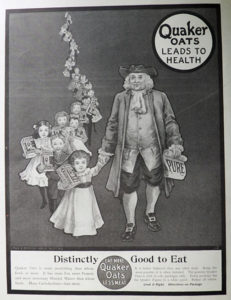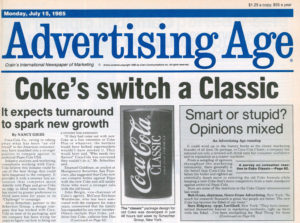Branding. It’s a term today that permeates every industry. We see branding inspiration from Beyonce’s Lemonade, Lebron’s contract with Nike, even from Budweiser beer’s name change to “America.” But before you begin your innovative and compelling brand campaign, let’s talk about the origin of the word.
The etymology of the word “brand” stems from the emergence of its use in the 1550s to mean an “identifying mark made by a hot iron.” It concerned the marking of the flesh of criminals and livestock and eventually developed a more nuanced definition when America entered the age of mass consumerism. Etymonline.com writes that the meaning “broadened by 1827 to ‘a particular make of goods.'” Before the 1880s, consumers had mostly relied on local shopkeepers to know their tastes and to tailor their goods and products accordingly. As a result, companies like Campbell and Quaker Oats, two early mass-market companies in the 1880s, were worried that consumers wouldn’t buy their products and prefer sticking to local loyalties. They decided to develop their own type of branding to counteract these preferences.
For example, Quaker Oats tried to capitalize on the stalwart, trustworthy Quaker man to convey that their product was honest, reputable, and delicious. The former CEO of Quaker Oats in the early to mid-1920s noted:
“If the business were split up, I would give you the land and bricks and mortar, and I would take the brands and trademarks, and I would fare better than you.”
A new concept in the 1800s, branding is now an invaluable, yet intangible business asset. Separate from the product itself, but with even greater potential influence on consumer perception, branding is a powerful tool for any company, and even the most established companies can slip up.
In 1985, Coca-Cola faced declining sales as their price wars with Pepsi continued and made the decision to reformulate its famous soda. After 200,000 taste tests with positive results, Coca-Cola ushered out its “New Coke” drink, only to face a surprising amount of consumer outrage. Boycotts, Coke “vigils,” and a torrent of angry mailings made company executives realize that consumers didn’t necessarily dislike the new product, but they were more upset with discontinuation of the old product. Coca-Cola had long branded itself as the “original” cola drink and turned its back on that positioning with its “new” drink. By contradicting its long-time branding, Coca-Cola made a serious misstep.
Today more than ever, branding has a close relationship with visual images. Customers absorb a multitude of advertisements and logos in their lifetimes and businesses need compelling design and graphics to make their brand identities memorable and valued. Here at ConceptDrop, businesses supply the voice of the brand and designers help create projects that fit the image. Streamlined, reliable, and easy to use, check out our How it Works page for more information or call us to get a quote on your business’s next design project.


